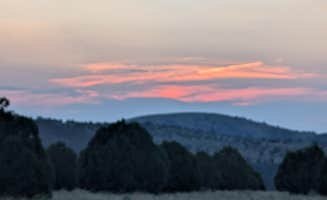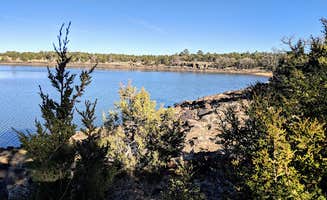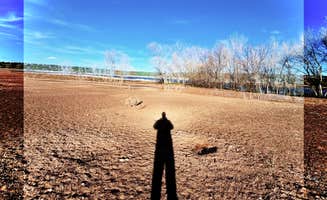Dispersed camping near Greer, Arizona provides access to the Apache-Sitgreaves National Forest at elevations ranging from 8,000 to 9,500 feet. Seasonal accessibility varies significantly, with many forest roads becoming impassable after heavy rains or during winter months. Most rustic sites feature open clearings surrounded by ponderosa pine and mixed forest vegetation offering natural privacy barriers between campsites.
What to do
Wildlife watching opportunities: At Pratt Lake Dispersed, the small body of water attracts various wildlife. "Nice quiet area. Small lake. Didn't fish, so unsure. No amenities at all, which is fine," notes Shane W.
Stargazing under clear skies: The higher elevations of State Line camping areas provide exceptional night sky visibility when weather permits. One camper reports, "I've stayed here a handful of times. It's never crowded unless you count elk, hummingbirds and squirrels. Summer temps in in 70s and 80s."
Photography opportunities: The forest roads surrounding dispersed camping areas offer excellent landscape photography potential with minimal light pollution. Seasonal color changes in late September through October create striking visual contrasts between pine green and deciduous yellows.
What campers like
Solitude and space: Many campers choose National Forest Road 117C for its relative isolation. One camper, Gina B., shared her experience: "Only a couple logging trucks on a very nice maintained road. All alone on a mountain top!! Me and my dog are living the life!"
Mountain temperatures: The higher elevation camping provides natural climate control during summer months with significantly cooler temperatures than lower elevations. During spring and fall, overnight temperatures frequently drop below 40°F even when daytime temperatures reach the 70s.
Natural forest setting: Concho Lake offers accessible rustic camping with some amenities not typically found at other dispersed sites. Heather E. wrote: "Stopped here prior to visiting the petrified forest. What a clean, quiet, gem. The lake was frozen over which made for tons of fun for us throwing rocks and listening to the ripple."
What you should know
Road conditions vary seasonally: Forest road access changes dramatically with weather conditions. Linda C. from National Forest Road 117C warns: "Don't try to make it to the shared coordinates soon after a snow melt. Grateful for our GoTreads. Road is rocky and rutted in places but there are camp spots 2wd can access if one takes it slow."
Limited amenities require preparation: Most dispersed sites have no facilities whatsoever. Monte W. notes about Concho Lake: "I would estimate there are about 10 sites. Most appeared to have garbage cans. There were two port o potty's that were not too bad. There were lots of cattle free range grazing around the lake."
Temperature fluctuations: The high elevation causes significant temperature drops at night, requiring appropriate camping gear even in summer months. Prepare for overnight temperatures 30-40 degrees cooler than daytime highs, particularly in open meadow areas.
Tips for camping with families
Choose sites with natural boundaries: Areas with natural features like fallen logs or rock formations create defined play areas for children while maintaining safety. Look for relatively flat, obstacle-free spaces within 50 feet of your vehicle.
Wildlife education opportunities: Dispersed camping near FR117 provides excellent opportunities for children to observe wildlife safely from a distance. Early morning and dusk viewing times typically yield the most activity.
Water access considerations: Many forest road camping areas lack access to surface water for recreation or utility purposes. Pack at least 1 gallon per person per day, plus additional water for cooking, cleaning, and emergencies.
Tips from RVers
Size limitations matter: Most rustic camping near Greer cannot accommodate large rigs. Shane W. from Pratt Lake Dispersed cautions: "Road is a little rough going in, in places."
Leveling challenges: Forest roads typically lack graded or improved surfaces. Bring leveling blocks and stabilizers appropriate for soft ground conditions, as many sites feature natural slopes.
Plan arrival times carefully: Daylight arrival is strongly recommended for Concho Lake, as payton L. discovered: "Got here at night and found it quite easily. Not the most scenic as the lake is dried up and the highway is visible (and audible)."






